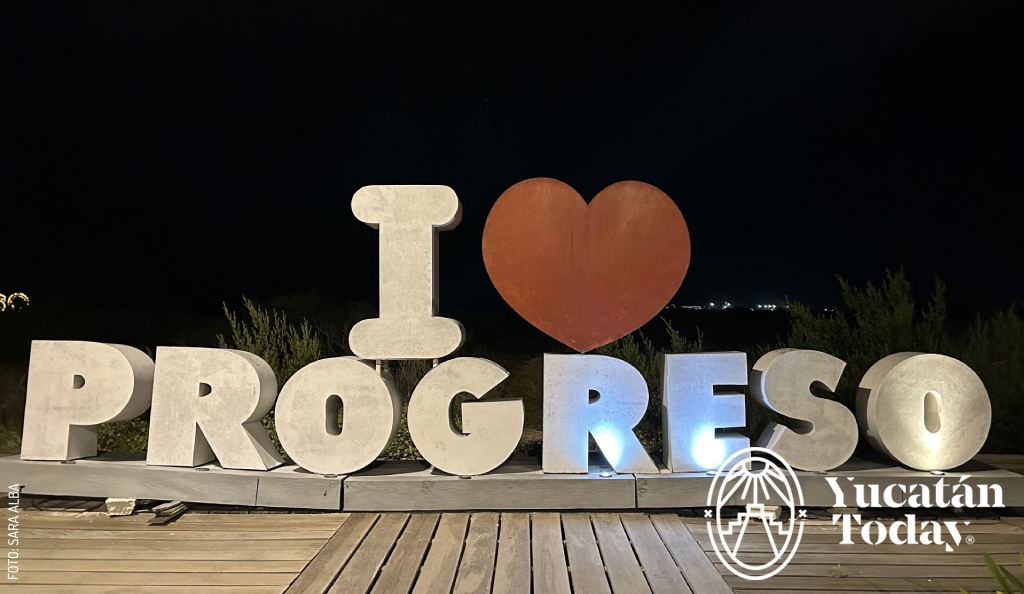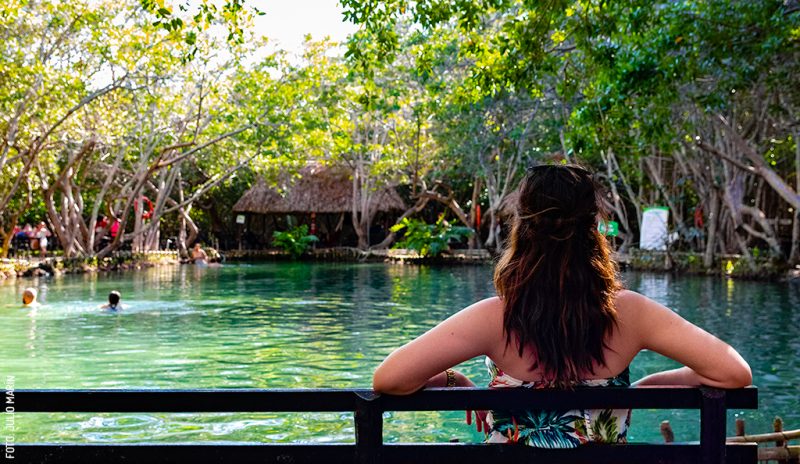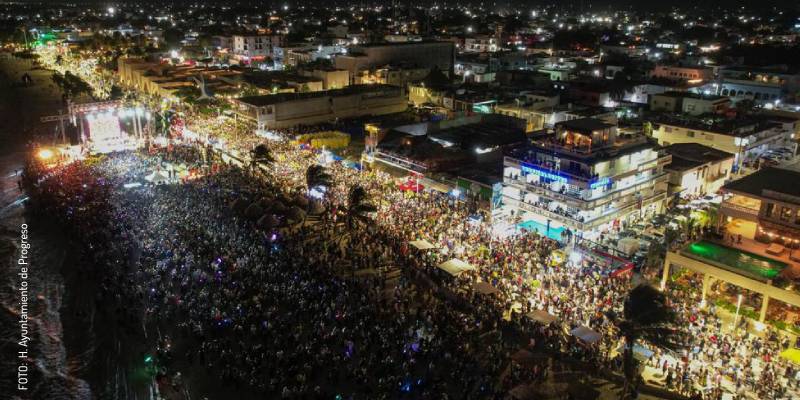Progreso
Progreso de Castro, commonly referred to as Progreso, is located just 36 km (or 22 miles) from the capital and serves as the state’s primary port, alongside being one of the most cherished beaches on the Emerald Coast for its lively ambiance. Its roots trace back to 1871, born out of necessity when the customs office was relocated from Sisal, famous for exporting Henequén, to a spot closer to Mérida.
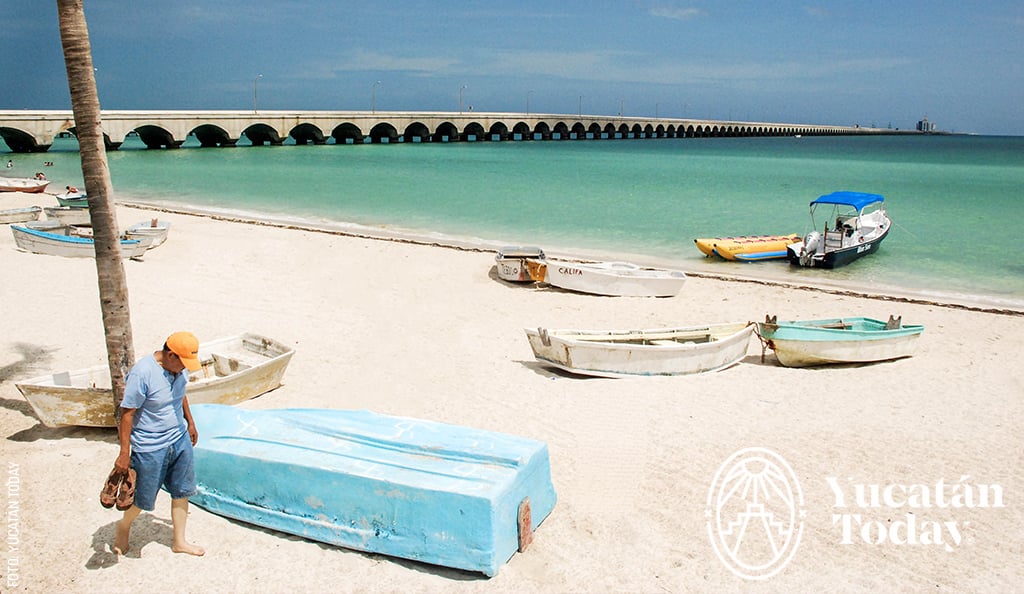
Progreso: The Quintessential Yucatecan Beach
Today, Progreso boasts some pretty cool achievements, like holding the Guinness Record for the longest pier in the world, measuring 8.01 km (or about 5 miles) since July of 2023 (happy first anniversary!). Additionally, it has earned the Blue Flag award from the Foundation for Environmental Education for the last couple of years, which is given to beaches that meet the highest standards of water quality, environmental education, and management.
As if that weren’t enough, Progreso also hosts several music festivals and concerts throughout the year. Its carnival has progressively grown more popular over the years, making it an excellent time to visit and experience the festivities.
What to do in Progreso?
With all the delightful restaurants, snack stands, and fun activities to explore along Malecón Tradicional, Malecón Internacional, Muelle de Chocolate, and the areas beyond the boardwalk, you'll probably need more than a day to fully take in all the charm this city has to offer. To make things easier, we’ve divided this guide into the different places and activities you can enjoy at each location.
Malecón Tradicional (Traditional Boardwalk)
This iconic boardwalk has seen quite a few changes over the years. The latest and most significant is that it has transformed from a vehicle-accessible route to a pedestrian-only haven. This is perfect for strolls, giving you plenty of time to explore the new spots that seem to pop up every few months. Starting at the west end, you'll find a monument honoring Juan Miguel Castro Martín (Progreso’s namesake and the driving force behind the creation of this port), along with a plaque and a monument celebrating Progreso’s Guinness Record.
During your walk, you’ll come across a variety of restaurants, coffee shops, and, depending on the time of day, Marquesitas, Esquites, or shaved ice stands, along with Merengueros, all while music fills the air. The first restaurant you'll encounter, right next to the monuments, is Eladio’s Bar. This beloved spot is known for its lively, party-like atmosphere, where you can enjoy an endless array of Yucatecan dishes as long as you keep ordering drinks.
Keep walking and you’ll come across more great spots like Maya Ka, Mobula, Los Mariscos de Chichí, The Garden Coffee, Toast & Coast, Almadía, Viña del Mar, and many others. Progreso is famous for its diverse selection of restaurants, Botaneros, cafeterias, and ice cream parlors, perfect for any occasion and time of day. If you’re in the mood for something fancy, Crabster is a tourist favorite. For a refreshing drink with the sea breeze as a backdrop, try the Tiki Kauil (rum with guava pulp and a mix of grapefruit and pineapple), Arcangel de Lobos (Mezcal Garra Negra with strawberry, basil, and orange juice), or their Mezcalitas. Crabster's menu is so extensive that you could easily spend the entire day sampling different dishes. However, some favorites include Camarones al Coco, their fried octopus, and Pan de Cazón. And I’d be remiss not to mention the Carpaccio Crabster—it's a must-try!
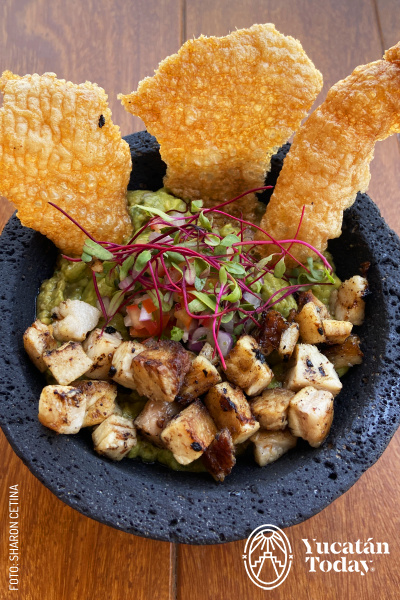
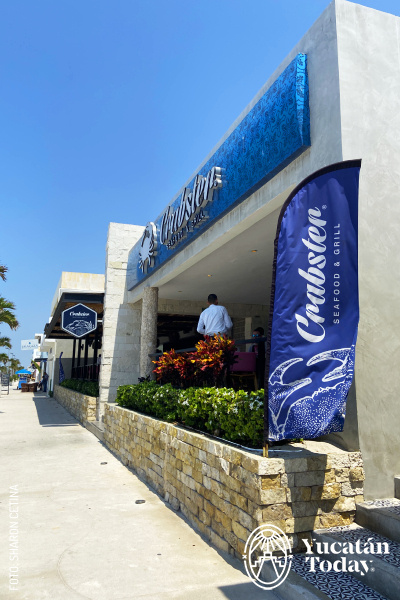

If you haven’t found a cozy spot yet or simply decided to keep going, you’ll soon reach the east end of the Traditional Boardwalk. The highlights in this area are Playa Incluyente (the inclusive beach), Museo del Meteorito (the Meteorite Museum), and Casa del Pastel.
Playa Incluyente
Let's start with Playa Incluyente. This beach area is equipped for people with disabilities and the elderly, allowing them to enjoy the calm waters of this port. The beach offers fully floatable amphibious chairs made of aluminum with buoys, transfers, and tours along the shoreline or the boardwalk. There is also parking, adapted bathrooms, and a designated staff member who assists individuals while they are in the water. This service is free and operates Monday to Friday from 8 am to 3 pm, and Saturdays from 9 am to 1 pm.
Museo del Meteorito
Yucatán is cool in so many ways (editor’s note: except the weather), but get this: did you know that the asteroid that wiped out the dinosaurs landed in Yucatán? Specifically, a few kilometers north of present-day Chicxulub. Progreso inaugurated the Meteorite Museum in 2022 to educate people about this extraordinary event.

The museum features six galleries with meteorite exhibits (including real pieces you can touch), dinosaur fossils, and moving dinosaur replicas. Thanks to the giant dinosaur sculptures in and around the museum's courtyard, it's hard to miss. If you’d like to learn more about this museum and the accompanying Jurassic Trail in Chicxulub, check out our article 'Meteorites and Dinosaurs: Yucatán’s Extraordinary Prehistoric Past.’
La Casa del Pastel and other beach clubs
The last stop on the Traditional Boardwalk is La Casa del Pastel. Built in 1946, La Casa del Pastel (or the Cake House) is affectionately named for its Art Deco architecture resembling a cake. Today, it’s a sophisticated restaurant and beach club with a charming atmosphere.

Speaking of beach clubs, Progreso has plenty to offer. These spots are perfect if you’re looking to spend the whole day in comfort. Besides La Casa del Pastel, Marymar Beach Club and El HaGuay Marea Bar are also great options to check out. Day-pass packages at these beach clubs typically include access to a restaurant, pool, bar, showers, bathrooms, and a kids’ area, among other amenities. If you’d like to learn more about this and other beach clubs around Yucatán, read “14 Amazing Yucatán Beach Day-Passes.”
Some restaurants around the Traditional Boardwalk offer palapas on the beach from 11 am to 6 pm. At some places, there's a minimum consumption requirement (one dish and one drink) to stay in the palapas, with food delivered directly to you. If you prefer not to order, the palapas cost around $400 pesos for the entire day. These establishments also provide bathrooms and changing rooms.
Malecón Internacional
Moving on to the newer boardwalk, the International Boardwalk begins near Eladio’s Bar. To get there, you must first walk through the Chocolate Pier, which is lined with many Marquesita stalls. Once you’re on the other side, you’ll notice several amusement rides like the Ferris Wheel and carousel. This is where the International Boardwalk welcomes you.

This boardwalk is perfect for those looking to exercise; you’ll see people on bikes, roller skates, and skateboards. It even features a skate park. The International Boardwalk also has soccer and beach volleyball courts, a kids' play area, and a variety of artistic monuments to admire as you walk by.
Progreso truly has something for everyone, no matter the time of day. However, the International Boardwalk really comes to life at night, with delicious street food stands for those seeking a relaxed evening with friends or family.
Other areas to check out
If you think Progreso is all about the Traditional Boardwalk and the International Boardwalk, you’re dead wrong. While these spots are popular among beachgoers, Progreso has much more to offer beyond its boardwalks. Here are some places to keep on your radar.

Francisco I. Madero market
Foodies, gather around! It's well known that the best place to discover a region's cuisine is at its market, and Progreso’s traditional market is the place to be for authentic Yucatecan dishes at unbeatable prices. Given that we’re on the coast, most dishes are seafood-based, like shrimp cocktails and ceviche, but there’s something for everyone (yes, even for those who aren't fans of seafood). Besides food, the market also features stalls selling souvenirs and clothing, making it a perfect spot to explore local culture and flavors.
Pig Beach
The name says it all: pigs! While pigs on a beach might sound unusual, you'll be amazed at how at home they look during your visit. Just a little over 15 minutes from Progreso’s boardwalk, these mini pigs, also known as Vietnamese pigs, are well cared for with monthly veterinary attention and a place to cool off. They enjoy a diet of fruits and vegetables and can be visited any day of the week for free. You can see them during the week at 11 am, 3 pm, and 5 pm, though not all of them come out at once. The pigs are free to roam during these times, and if you want to swim with them, you can do so from Thursday to Sunday between 12 and 1 pm. Pig’s Beach is a peaceful spot with food and drink stalls, making it a unique and relaxing destination.
El Corchito

If visiting cenotes is on your bucket list, El Corchito Eco-Reserve is the perfect destination. Located just a little over 5 minutes from Progreso, El Corchito is a breathtaking spot with its exceptionally crystalline waters and expansive natural beauty. The reserve features three main cenotes: El Corchito, Pájaros, and Helechos, plus a smaller one perfect for dipping your feet.
This ecological reserve is dedicated to protecting plant and animal species, meaning various activities harmful to the environment are prohibited. El Corchito is teeming with raccoons and coatis, which is why bringing food into the reserve is not allowed. You'll also spot turtles in some of the cenotes, adding to the area's unique charm. Wander along the bridges and long paths that weave through the reserve, providing a serene backdrop for your adventure. For a more tranquil visit, head to El Corchito during the weekdays when it’s less crowded.
Admission prices are $126 pesos for adults, $63 pesos for Mexican adults, $47 pesos for seniors and children aged 5 to 10, and free for people with disabilities. The reserve is open from 9 am to 4 pm, offering plenty of time to explore this natural paradise. Lockers are also available for $35 pesos for the duration of your visit.
Some activities to try out
Now, if you’re into trying something new or sports activities brighten your soul, listen up! A fantastic way to explore Progreso’s mangroves is with a paddle board tour from Compas Sailing.
Compas Sailing offers paddleboard tours that not only let you experience the beauty of the mangroves but also teach you about their importance. Plus, you'll learn the basics of paddleboarding and get comfortable on the board. It’s a great sport with numerous benefits and offers spectacular views.

They have several tour times, but the most popular (and for good reason) is the sunrise tour. Getting up early might be tough, but it's totally worth it. Fanny, who leads the tours, is an excellent guide. She sticks with you throughout the tour, helping you out if you struggle with the board.
The tour is dynamic, taking you through paths in the mangrove that require you to lie down on the board to pass through. It’s friendly for all ages and skill levels since the water never goes above knee level, so no worries there.
The tours start from Marina Laguna Mar, and cost $600 pesos per person without the dinghy ride to the mangrove or $650 pesos with the dinghy, depending on the wind conditions. Compas Sailing also offers paddleboard courses if you want to dive deeper into the sport.
Paddleboarding is just one of many sports you can enjoy in Progreso. Kitesurfing and kayaking are also quite popular in the area. Yuckite, an extreme sports school specializing in kitesurfing, wing-foil, and kite-foil, is a great option if you’d like to receive lessons from trained professionals.

Yoga is another popular activity you can enjoy in Progreso. Within Yuckite’s facilities, you can join yoga sessions led by the fantastic team from Óol Yoga. They offer classes on Wednesdays and Fridays at 8 am, and on Saturdays and Sundays at 9 am. Whether you prefer standalone classes or monthly packages, there’s an option for you. Plus, they occasionally host special events like meditations, dance classes, 108 Sun Salutations to mark seasonal changes, yoga certifications, and more.
If you’re keen to explore more yoga spots on other Yucatecan beaches, don’t miss our article “Yoga on the Beaches of Yucatán.”
How to get to Progreso
Driving from Mérida just go north until you reach Progreso. You can’t miss it! By bus, the Autoprogreso bus leaves every ten minutes between 5 am and 10 pm. You can take it at the terminal (Calle 62 x 65 y 67) or at any of its stops along the road to Progreso.
So, as you reach the end of this extensive guide, we trust it's clear why Progreso is so beloved by locals and visitors, young and old alike. We hope we've sparked your interest in this charming port. Remember, there's always something new to try or discover on your next visit. Let your adventurous spirit lead the way, and onto our next adventure!
Don’t forget to follow Progreso’s official social media accounts to stay updated on the special events happening throughout the year.
Written by Sara Alba.









